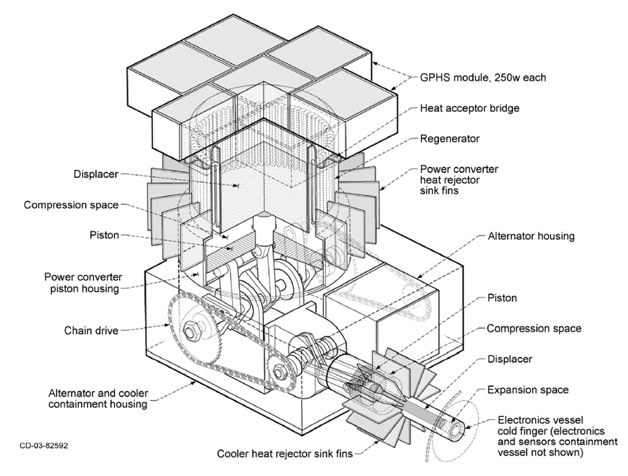Resiliency - Cooling (page 2 of 3)
Power Estimates
Engineers at NASA Glenn Research Center have designed a coupled Stirling engine and Stirling cooler powered by seven 250W Plutonium Isotope GPHS units [Landis and Mellow, 2007]. Analysis of their design using the SageTM model gives an estimated power output of 487 W. Using an estimated mechanical efficiency of 85% (based on NASA Glenn laboratory tests of Stirling engines in the 1980s), this design should yield 400 W of mechanical power.
In our proposed design, the mechanical power from the output of the primary heat-powered Stirling engine is utilized to drive both cooling engines directly. This reduces losses from converting mechanical power to electrical and back to mechanical as proposed by Hunter, giving us greater cooling capacity. The design by Landis and Mellot takes this into consideration for single-stage cooling system. The SageTM model estimate of their coupled cooling engine can reduce the temperature of an outer capsule to 200 °C (compared to 460 °C atmospheric temperature on Venus) with 238.9 W of mechanical power. Accounting for 85% mechanical efficiency, this system requires 280 W of the available 400 W output by the primary engine.

